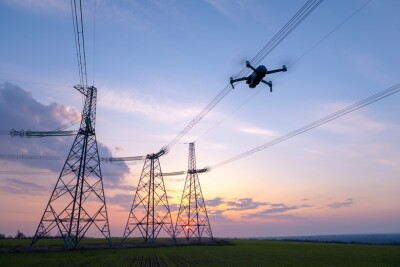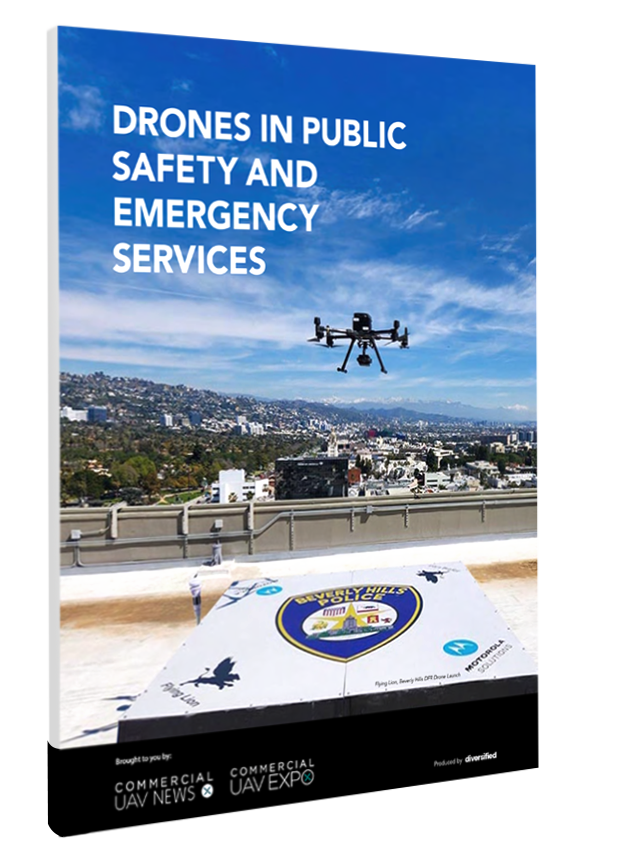Over the past few years, many advances in the drone industry have gone hand-in-hand with advances in artificial intelligence (AI). In the commercial drone sector, the use of AI to increase efficiency and safety has led to rapid integration. Still, many commercial operators are unsure of how to effectively bring AI into their operations, and the ever-evolving technology poses ongoing challenges for would-be adopters.
Among the many companies offering AI solutions for the drone industry is Vivum. According to Tanmay Rajpathak, Senior Sales and Business Development at Vivum, his company’s “evolutionary artificial intelligence approach to creating dynamic neural models represents a fundamental shift to drone and robotics autonomy.” What makes these models particularly special, he said, is that “they can run on standard commercial drone flight controllers, unlike traditional autonomous systems that require expensive additional hardware and complex sensor arrays.”
To learn more, Commercial UAV News spoke with Rajpathak about Vivum ’s approach to AI, how this approach can improve commercial drone applications, and more.
Commercial UAV News: Describe Vivum’s dynamic neural models. How do they work?
Rajpathak: The foundation of our technology is bio-inspired AI that mimics how actual biological organisms function. We model our neural network's individual neurons after biological ones, and instead of traditional data training, we use evolutionary algorithms - essentially “survival of the fittest” - to develop desired behaviors. To put this in perspective, while most autonomous systems today operate like following a detailed but static map, our dynamic neural networks function more like an experienced pilot's instincts built directly into the flight controller - they can adapt to unexpected situations and respond naturally to their environment, rather than simply following pre-programmed patterns from training data. This approach has shown remarkable results, with some applications demonstrating efficiency improvements of over 10,000 times while using existing hardware like microcontrollers and FPGAs.
Commercial UAV News: What are the advantages of this approach?
Rajpathak: There are three key advantages that make this technology particularly valuable for commercial UAV operations. First, it's compatible with standard flight controllers - no need for expensive GPUs or specialized hardware. Second, it achieves sophisticated autonomous behaviors using basic sensors, eliminating the need for costly additional hardware like high-end cameras or LIDAR systems. Third, these neural networks are inherently adaptable, handling unexpected situations and varying conditions effectively - which is crucial for real-world applications like inspection, mapping, and delivery.
Commercial UAV News: How does this approach benefit commercial drone operations?
Rajpathak: Let me explain how our dynamic neural technology transforms drone operations through a fundamentally different approach to autonomy. Traditional systems heavily depend on complex vision systems and sensors for navigation, but our dynamic neural networks give drones an intuitive understanding of their surroundings and movement - similar to how you naturally navigate your home in low light conditions. This inherent awareness enables more reliable performance with simpler, less expensive hardware, which is particularly valuable during in-flight emergencies that require immediate response to unexpected situations.
The bottom line for commercial drone operators is that they can now access advanced autonomous capabilities without massive hardware investments or complex integration projects. We're making legitimate autonomy both accessible and practical for everyday commercial applications.
Commercial UAV News: How can this technology benefit drone-based operations in specific industries, like farming or package delivery?
Rajpathak: In agricultural applications, one of the biggest challenges is maintaining precision across large areas while adapting to variable conditions like unexpected wind patterns or differences in crop growth. Our autonomous solutions enable navigation even without GPS and ensure precise mapping capabilities, allowing for accurate monitoring and targeted interventions even in extensive or remote farming operations where conventional drones might struggle.
For surveying professionals, we often see challenges in areas with limited signal coverage or complex terrain that can create gaps in data collection. Our dead reckoning technology enables drones to operate reliably in these environments, maintaining consistent and accurate data collection over extended ranges - making it particularly effective for rugged or remote locations.
When it comes to delivery operations, our approach provides truly resilient autonomous navigation. Think about how you naturally adjust your walking when carrying something delicate - our drones similarly adapt their behavior to protect their payload and complete their mission, even if primary systems experience issues.
Commercial UAV News: Can you give us some examples of how Vivum
Rajpathak: While many of our current partnerships involve sensitive applications that I can't discuss in detail, our technology is being rigorously tested and validated in some of the most demanding scenarios imaginable. These are high-stakes situations where failure isn't an option and system resilience is absolutely critical.
What I find particularly exciting is that we're now bringing these capabilities from defense applications
To put it in perspective, if our technology can meet the stringent requirements of these demanding applications, consider its potential impact on commercial inspection, agriculture, or delivery operations. We're at a pivotal moment where these proven capabilities are becoming accessible to commercial drone operators who need reliable, cost-effective autonomy solutions.
While I can't share specific details about our sensitive work, we have several partnerships in development that will demonstrate the technology's value across various industries. We're looking forward to making several significant announcements in the coming months about new applications and partnerships.
Commercial UAV News: For a lot of drone operators, integrating AI is confusing – even intimidating. What do drone operators need to know about Vivum AI’s dynamic neural models, and what advice would you give them when preparing to introduce these models to their operations?
Rajpathak: I like to explain our technology by comparing it to biological intelligence in nature. Just as birds can navigate complex environments with relatively simple sensory inputs, our dynamic neural models enable drones to operate autonomously using existing hardware. This isn't traditional AI - it's a fundamentally different approach that mirrors how biological systems learn and adapt, particularly in unexpected or emergency situations.
For drone operators considering this technology, there are three key points to understand:
First, you can achieve advanced autonomous capabilities without expensive hardware upgrades. Our models are designed to run efficiently on standard flight controllers, and for more complex computational tasks, we can deploy on readily available hardware like FPGAs.
Second, the energy efficiency of our AI combined with precise navigation capabilities means your drones can fly longer missions and accomplish more in less time. This translates directly to improved operational efficiency.
Third, your drones gain natural resilience to failure. Similar to how animals instinctively adapt when injured, our systems maintain mission capability even when primary systems experience issues.
The most important thing to understand is that this isn't just another drone automation solution - it represents a fundamental advancement in how drones can perceive and interact with their environment. We've validated these capabilities in extremely demanding scenarios, and now we're making this game-changing technology accessible to commercial operators who need reliable, resilient autonomy solutions.
Commercial UAV News: What’s next for Vivum?
Rajpathak: We're at an exciting inflection point. Our core focus has been on developing a fundamentally new approach to machine intelligence—one that mirrors how natural systems adapt and learn. This technology can be applied across multiple domains, from air to land, sea, and space. It's essentially about giving machines fundamental instincts - the natural ability to sense, react, and adapt to their environment.
The beauty of this approach is its universality. Just as the basic principles of biological intelligence work across different species, our technology has applications across any autonomous system. We're seeing incredible interest across industries as organizations recognize the potential of systems that can truly adapt and operate independently, especially in unpredictable situations.
We look forward to sharing several significant announcements in the coming months about new applications and partnerships.















Comments